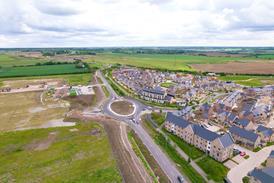The way teachers teach and students learn has changed and empty buildings and outdated facilities are draining resources. A culture shift is required if HE institutions are to avoid a slow decline into irrelevance, says Philip Watson

Across the UK and Europe, the higher education (HE) sector is under severe strain. According to the Higher Education Policy Institute, 43 UK universities are reported to be in financial crisis, with several announcing rounds of redundancies in the past year.
The Universities of Kent and Greenwich have announced they are merging to stave off their financial challenges. Domestic tuition fees have all but been frozen since 2017 while operating costs rise.
Falling numbers of international students — traditionally relied upon to balance the books — are compounding the problem. For decades, overseas fees have subsidised the sector, but tightening visa rules, rising living costs, and increasing global competition mean that this pipeline is no longer reliable. What was once a dependable safety net is now fraying.
Yet finances tell only part of the story. At the same time, the very nature of learning and teaching is changing.
Even conservative studies suggest campuses are operating with around one-third more buildings than they need
Hybrid and remote teaching – accelerated by the pandemic and now cemented as part of the academic landscape – has fundamentally altered how students use campus facilities. The result? Most universities now find themselves with too much space.
Even conservative studies suggest campuses are operating with around one-third more buildings than they need. Heating, lighting and maintaining this surplus stock drains millions of pounds annually — money that could be invested in teaching, research, and student support.
This is the elephant in the room. Despite budgets tightening and staff being let go, institutions continue to carry the burden of maintaining buildings that no longer fit their pedagogical or financial reality.
Unless this is addressed, the sector risks continuing on a trajectory of decline. A radical shift is required.
The way forward can be framed in three words: consolidation, community, culture.
Consolidation means rethinking the physical footprint of campuses. Instead of clinging to sprawling estates, universities must be bold enough to downsize. A dose of realism is required to assess the usefulness of academic offices, large lecture theatres, endless wide corridors, libraries with shelves of unused books, duplicated support spaces and so on.
Rationalising space can cut costs dramatically, freeing up resources for investment in people and programmes. Smaller campuses, designed around actual teaching, learning and research needs, can also become more sustainable, reducing carbon footprints while saving millions on energy and maintenance.
Universities could become active partners in urban regeneration, working with towns and cities to revitalise high streets and neighbourhoods
Community points to a new civic role for universities. Underused facilities can be repurposed to serve local needs: shared libraries, cultural venues, health and wellbeing hubs, or business incubators.
Instead of being walled-off ivory towers, universities could become active partners in urban regeneration, working with towns and cities to revitalise high streets and neighbourhoods. In doing so, they would not only strengthen their social licence to operate but also build deeper ties with prospective students and local employers.
Finally, learning culture must evolve. Universities need to rethink teaching so that learning does not just happen in lecture theatres, seminar rooms or labs, but in every space on campus.
Circulation spaces, cafes, atria, libraries and outdoor areas can become active learning environments, fostering collaboration and inclusion. Good design and technology can make campuses more flexible.
A culture shift towards flexible, dynamic and student-centred learning can make smaller, consolidated campuses feel richer and more alive than the sprawling estates we currently have. Embedding this culture requires both pedagogical innovation and estate strategy to move in step. Changing culture will be the biggest challenge.
If consolidation, community and culture can be embraced, universities can emerge leaner, greener, and more resilient
This transformation will not be easy. It demands leadership willing to confront entrenched assumptions and the difficult politics of space. It also requires investment in adaptive design and a willingness to see the university not as a landlord of buildings, but as a civic institution with a renewed educational mission.
But, if consolidation, community and culture can be embraced, universities can emerge leaner, greener, and more resilient. They will be better neighbours to their towns, more relevant to their students, and more financially stable.
The current crisis, painful as it is, offers a chance for a paradigm shift. The alternative – clinging to empty buildings and outdated models – is a slow decline into irrelevance.
Philip Watson is chair and head of design at HLM Architects



























No comments yet